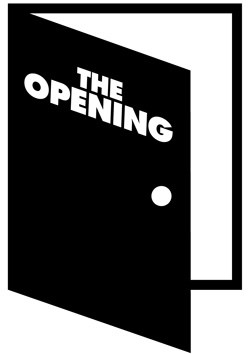
|
THE OPENING is all about introducing the fascinating, quirky and wonderful people working in and around the visual arts in Vancouver. Each week, we'll feature an artist, collective, curator or administrator to delve deep into who and what makes art happen! |
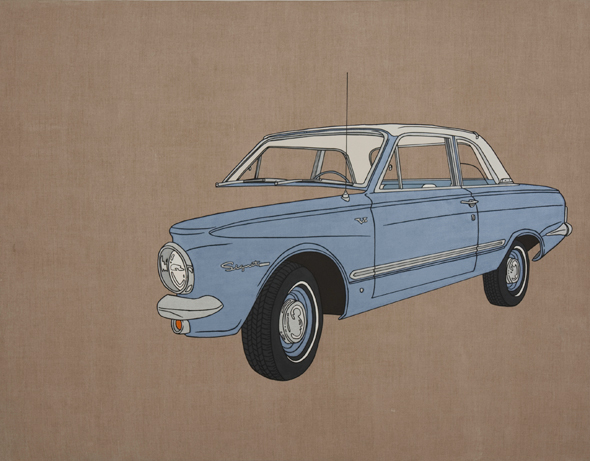
'Plymouth Valiant Signet Super Sport V8', 2009, acrylic on linen, 56” x 72"
Artist and curator Kevin Hubbard is using art “to create the world I want to inhabit by creating my own worldview.” Artistically (and personally) interested in the idea of achieving transcendence, he uses art to rid himself of things to become the best person he can be, while encouraging others to do the same.
Hubbard is what I would describe as an academic worker. He starts with questions, does copious research in order to answer those questions, and then investigates the answers he has discovered further. Finally he reaches the point of production. His art seems visually simple, but procedurally and conceptually it is not. For his distinct line drawings, he begins with a photograph, either one he has taken himself or one he has found, and manipulates it in Photoshop. All of the important lines are traced, and then he transfers that line drawing into Illustrator, turns the lines into vectors, and manipulates them more. The line drawing is then printed. If it is for a painting, the lines are cut in vinyl and transferred to a canvas.
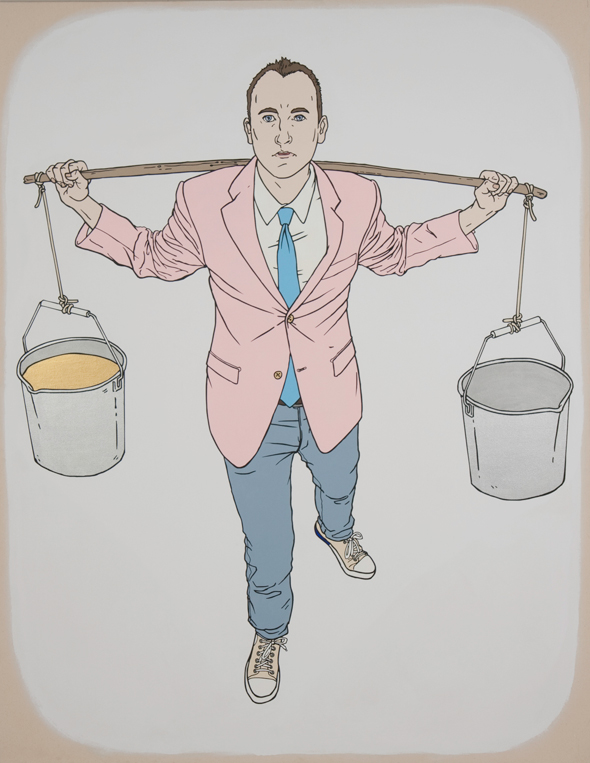
'The Water Carrier' for the 'In Conversation' series, 2010, acrylic on canvas, 72” x 56”
The results are prints and paintings and die-cuts that are approachable. They look like a comic book, and so have the ability to communicate on a level available to a wider variety of people. In addition, every work is identical no matter what medium it is reproduced onto, eliminating the idea of the original, and the unique qualities of each medium. It is almost like branding each piece with a particular look – this image will always look this way by this artist, and there will be no variation. Branding is an area of particular interest for Hubbard. It manifests in his work in a number of ways, but most notably in his use of his own image in many of his line drawings, and other representations of himself. This is as much about the persona of the artist as it is about Hubbard the name and identity. The aim is to “do away with self-doubt, self-hate, all of those things that come with identifying with an identity, to try and get in contact with something real.” He is dissecting what supposedly makes him unique, discovering its malleability, and then attempting to alter it in a mindful way.
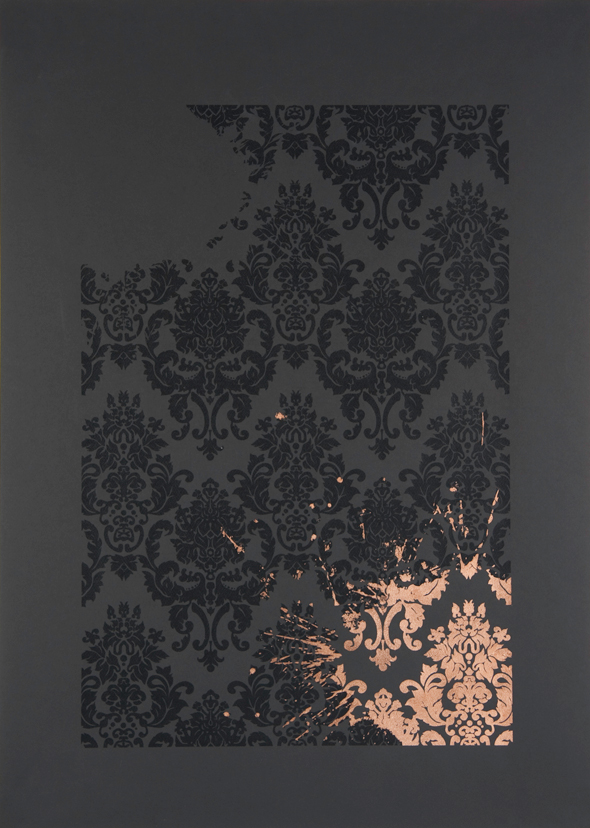
'Dichotomies (All That Glisters - Black & Gold)' from the 'Building Materials®' series, 2009, screen printed iridescent varnish and size, and hand appliquéd gold leaf on paper, 39” x 27”
Other than self-branding, another brand pops up frequently in Hubbard’s art – Pabst Blue Ribbon. No, this is not a hipster joke, although that shift in meaning is certainly of interest to him. PBR was originally a low-class, workers beer before it was adopted by ‘alienated’ youth all over North America. This alteration in meaning from past to present, this cyclicality plays out in other facets of his art also – wallpaper prints reflective of a shift from kitsch to high-class and back again. In his recent exhibition at 304 Days, Hubbard used PBR in a sculptural work referencing Barnett Newman and the working man. Visitors would question its use, exclaiming, “What is that hipster beer doing here?” Visitors were using present signs to read something referencing the past, rather than interpreting it from both reference points.
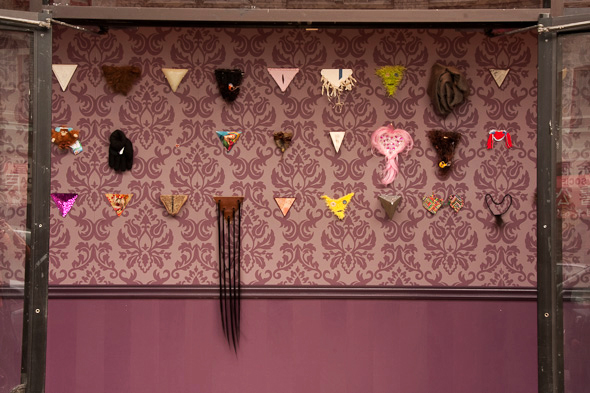
The merkins on display at 221A
Hubbard’s current project is a curatorship, revolving around a centuries old hairpiece known as the merkin. Merkins are “pubic wigs originally worn by prostitutes to cover disease sores and by women who shaved their pubic hair to combat lice.” More than 25 artists contributed merkins from materials ranging from felt to raw fish to active yeast, covering subject matter from the Madonna to Barbie, all hung together in a space transformed into a store front. The exhibition space at 221A is masquerading as a store called MERKINtile, complete with a traditional store opening announcement advertised to media outlets. Locals are both intrigued and confused when they pass by – what is this sexy, purple boudoir, festooned with strange triangular objects? What is a merkin? Is this a store? Hubbard is hoping to shed light on the things that we take for granted - design, place, the body, fashion - in such a ridiculous way that we are no longer a slave to them. An apt metaphor for this he notes is “like a drunk trying to drink [himself] sober.”
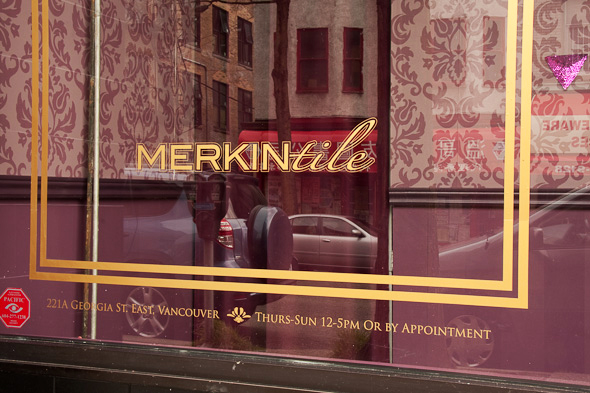
MERKINtile began with a request to curate at 221A Artist-Run Centre whose mandate is to facilitate conversations between art and design. Hubbard wanted to “challenge absolutely every convention of that opportunity.” Some of the worst design tends to be in fashion, where how it looks can often be more important than how it functions on a person. Artist-run centres are typically not involved in the commercial gallery system, so Hubbard made 221A into a store, selling art/wares. A curator often picks particular artists to work with, either for the relevance of what they do to the exhibition, or just because they are a friend. Instead, Hubbard made an international call for submissions, and the vast majority of works received are currently shown.
Kevin Hubbard is a recent graduate of Emily Carr University and Cooper Union. He has exhibited at 304 Days, Firehall Arts Centre, Charles H. Scott Gallery, The Houghton Gallery in New York, and Mocha Arthouse in New Delhi, India. MERKINtile is up at 221A (221 E. Georgia St) until May 8. There will be a symposium this Saturday from 2-7pm at 221A featuring a conversation between Hubbard and yours truly, and the presentation of research related to the project by Suzanne Fulbrook, Denise Lang, Erdem Tasdelen, and Joanna Peters. For more information on the exhibition, please visit 221a.ca. More information on the symposium can be found on the facebook event page here.
All photos by Graham Case.


